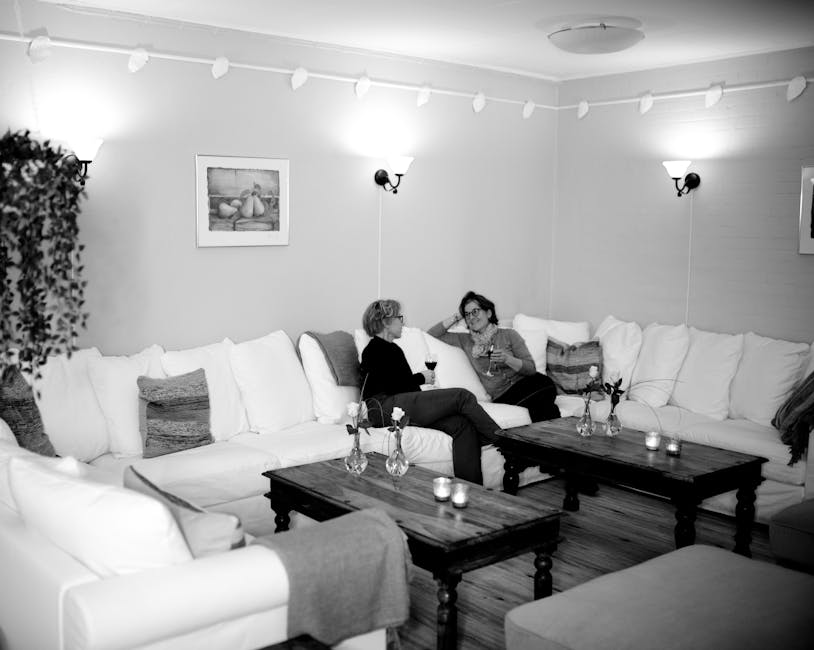10 Essential Meeting Room Etiquette Tips for a Productive Workplace
“As employees return to the office, it's crucial to establish meeting room etiquette to ensure a productive and respectful workplace. This article explores 10 essential tips, including implementing a room booking system, equipping rooms with the right technology, and being mindful of sound and refreshments. ”

As more employees return to the office, the demand for meeting rooms has skyrocketed. In fact, since May 2021, meeting room bookings have grown by an impressive 300%. This surge in onsite collaboration highlights the importance of establishing clear meeting room etiquette to ensure a productive and respectful workplace environment.

1. Implement a Room Booking System
To avoid confusion and double-bookings, it's essential to have a reliable room booking system in place. This allows employees to easily reserve, find, and use meeting rooms on the days they're onsite. When choosing a room scheduling software, consider features such as space usage analytics, privacy controls, and schedule displays to meet your workplace's specific needs.
2. Support Meeting Rooms with the Right Technology
Equip your meeting rooms with the necessary technology to ensure seamless collaboration. This includes display screens that easily connect to laptops, quality audio equipment, and the ability to book rooms from various devices. Regularly maintain and update your technology to avoid disruptions during meetings.
3. Book Rooms in Advance
Encourage employees to plan ahead and book meeting rooms at least 1-2 days in advance, depending on the size of the meeting. This helps prevent last-minute scrambles and ensures that everyone has the space they need to collaborate effectively. For impromptu meetings, ensure your room reservation system has key integrations with calendars like Google, Slack, and Teams.

4. Use Wayfinding
Implement office wayfinding to help employees easily locate meeting rooms around the office. This can be as simple as a static map near the entrance or an interactive tool that guides people to their desired location. Clear wayfinding reduces the risk of employees getting lost or arriving late to meetings.
5. Book the Right Size Room
Match the meeting room size to the number of attendees to ensure comfort and efficiency. Encourage employees to book smaller rooms for 1:1 discussions and larger conference rooms for team meetings. This helps optimize space usage and prevents overcrowding or underutilization of meeting rooms.
6. Avoid "Ghost" Rooms
Remind employees to cancel meeting room reservations if their plans change to avoid "ghost" rooms. This is especially important in a hybrid work environment, where schedules can be more flexible. Regularly communicate the importance of releasing unused meeting rooms to ensure availability for others.
7. Don't Overrun
Respect everyone's time by starting and ending meetings promptly. Set clear agendas and expectations for attendees, and encourage presenters to prepare materials in advance. This helps keep meetings focused and prevents them from running over, which can disrupt subsequent reservations.

8. Furnish Your Meeting Rooms
Create inviting and functional meeting spaces by carefully selecting furniture and layouts that cater to different employee needs. Consider including whiteboards for brainstorming sessions, comfortable seating for longer meetings, and various table heights to accommodate different preferences. Well-designed meeting rooms can boost employee satisfaction and productivity.
9. Be Aware of Sound
Be mindful of noise levels during meetings, especially if your office has an open layout. Close meeting room doors to minimize sound travel and ensure that remote participants' audio is set to a reasonable volume. Similarly, be aware of external noise from nearby common areas or music that may disrupt ongoing meetings.
10. Provide Refreshments
For longer meetings, consider providing refreshments to show appreciation for employees' time and commitment. This can be as simple as offering water and glasses or including snacks that cater to different dietary needs. Small gestures like this can help create a more welcoming and productive meeting environment.

By implementing these 10 essential meeting room etiquette tips, you can foster a more respectful and efficient workplace. As the way we use meeting rooms continues to evolve, it's crucial to adapt and optimize your workspace] to meet the changing needs of your employees. With the right tools, like [WOX Rooms, you can make data-driven decisions to enhance your meeting room management and create a more productive work environment.